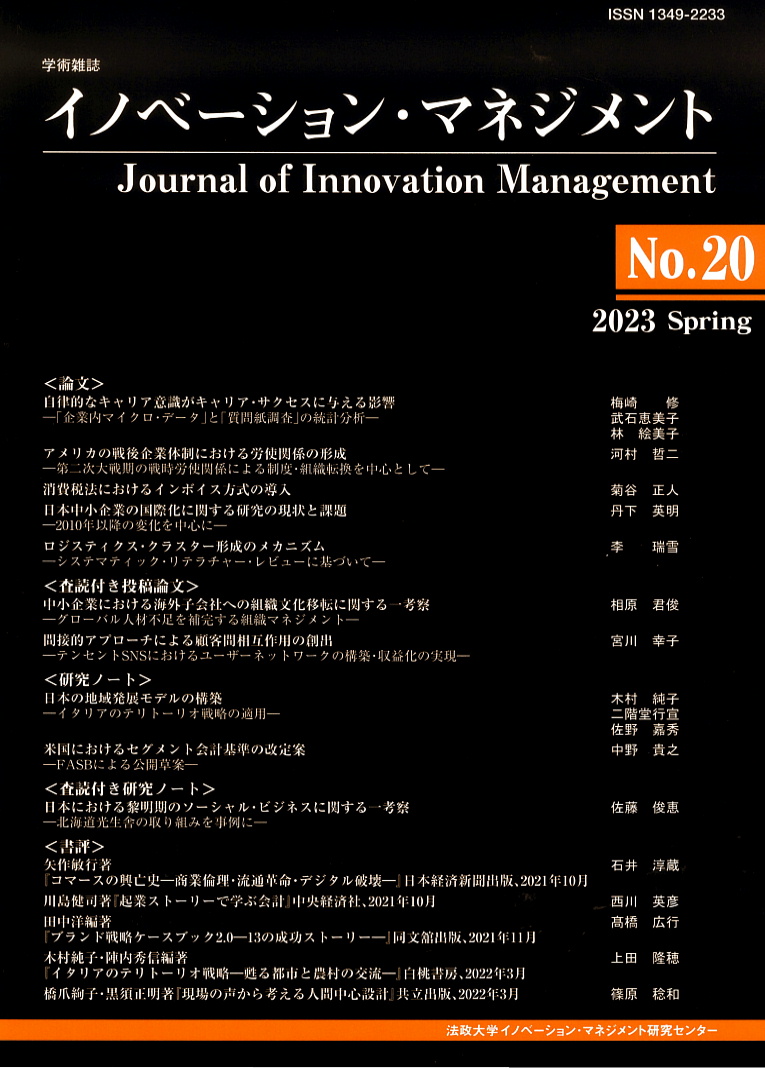Volume 20
Displaying 1-15 of 15 articles from this issue
- |<
- <
- 1
- >
- >|
Articles
-
Article type: Article
2023Volume 20 Pages 1-20
Published: March 31, 2023
Released on J-STAGE: March 31, 2023
Download PDF (506K) Full view HTML -
Article type: Article
2023Volume 20 Pages 21-46
Published: March 31, 2023
Released on J-STAGE: March 31, 2023
Download PDF (559K) Full view HTML -
Article type: Article
2023Volume 20 Pages 47-84
Published: March 31, 2023
Released on J-STAGE: March 31, 2023
Download PDF (649K) Full view HTML -
Article type: Article
2023Volume 20 Pages 85-100
Published: March 31, 2023
Released on J-STAGE: March 31, 2023
Download PDF (417K) Full view HTML -
Article type: Article
2023Volume 20 Pages 101-134
Published: March 31, 2023
Released on J-STAGE: March 31, 2023
Download PDF (600K) Full view HTML
Refereed Articles
-
Article type: Refereed Article
2023Volume 20 Pages 135-148
Published: March 31, 2023
Released on J-STAGE: March 31, 2023
Download PDF (518K) Full view HTML -
Article type: Refereed Article
2023Volume 20 Pages 149-165
Published: March 31, 2023
Released on J-STAGE: March 31, 2023
Download PDF (660K) Full view HTML
Research Notes
-
Article type: Research Note
2023Volume 20 Pages 167-182
Published: March 31, 2023
Released on J-STAGE: March 31, 2023
Download PDF (2453K) Full view HTML -
Article type: Research Note
2023Volume 20 Pages 183-194
Published: March 31, 2023
Released on J-STAGE: March 31, 2023
Download PDF (387K) Full view HTML
Refereed Research Note
-
Article type: Refereed Research Note
2023Volume 20 Pages 195-213
Published: March 31, 2023
Released on J-STAGE: March 31, 2023
Download PDF (776K) Full view HTML
Book Reviews
-
Article type: Book Review
2023Volume 20 Pages 215-219
Published: March 31, 2023
Released on J-STAGE: March 31, 2023
Download PDF (264K) -
Article type: Book Review
2023Volume 20 Pages 221-224
Published: March 31, 2023
Released on J-STAGE: March 31, 2023
Download PDF (257K) -
Article type: Book Review
2023Volume 20 Pages 225-229
Published: March 31, 2023
Released on J-STAGE: March 31, 2023
Download PDF (291K) -
Article type: Book Review
2023Volume 20 Pages 231-234
Published: March 31, 2023
Released on J-STAGE: March 31, 2023
Download PDF (261K) -
Article type: Book Review
2023Volume 20 Pages 235-238
Published: March 31, 2023
Released on J-STAGE: March 31, 2023
Download PDF (278K)
- |<
- <
- 1
- >
- >|
